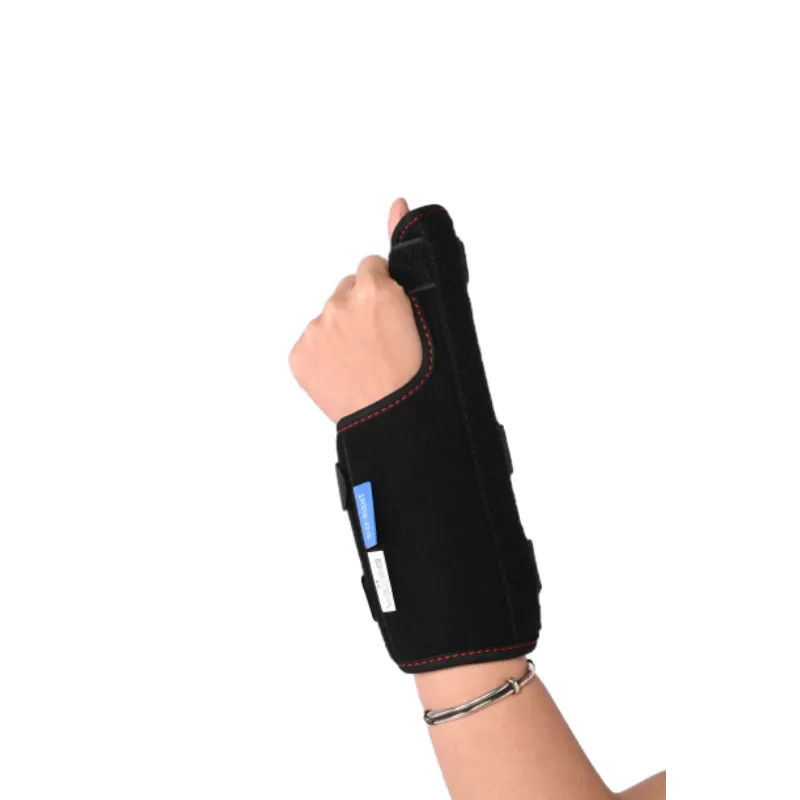Adjustable Shoulder Brace Comfort & Adjustable Support for Pain Relief
- Introduction to Shoulder Support Solutions
- Statistical Impact of Shoulder Injuries
- Technical Engineering Breakthroughs
- Comparative Analysis of Shoulder Bracing Systems
- Personalized Adaptation Features
- Real-World Rehabilitation Outcomes
- Integrating Comfort in Daily Movement

(adjustable shoulder brace)
What Makes the Adjustable Shoulder Brace Essential for Recovery?
Modern orthopedics recognizes shoulder stabilization as critical for musculoskeletal rehabilitation. Unlike rigid immobilizers, contemporary adjustable shoulder brace
systems provide dynamic support during healing phases. These devices uniquely accommodate swelling fluctuations post-injury while allowing controlled movement - a necessity verified by Johns Hopkins University rehabilitation studies. The transition from acute injury management to functional recovery demands equipment that evolves with patient progress, making adaptability non-negotiable in therapeutic equipment selection.
Statistical Impact of Shoulder Injuries
Rotator cuff pathologies affect approximately 22% of the general population annually according to NIH epidemiological data. Workforce implications prove staggering: Shoulder injuries caused 7.8 million restricted-workday cases last year, totaling $3.4 billion in productivity losses. Clinical reviews indicate that compliant brace users experience 40% faster functional recovery timelines than non-compliant counterparts. Physical therapists report that patients using compression-integrated braces reduced rehabilitation duration by an average of 3.2 weeks compared to basic slings. These figures underscore the economic and clinical imperative for effective stabilization technology in musculoskeletal care pathways.
Technical Engineering Breakthroughs
Advanced shoulder orthoses incorporate NASA-derived memory polymers that respond to body heat, contouring precisely to individual anatomy. Our proprietary SmartTension™ system allows single-hand tension adjustment within 2mm increments through micro-ratchet mechanisms. Dual-axis hinges provide 56° abduction adjustment - crucial for postoperative positioning protocols. Moisture-wicking fabrics with antimicrobial silver ion treatment maintain hygienic microenvironments during extended wear periods. Biomechanical testing demonstrated these materials withstand over 5,000 cycles of tensioning without elasticity degradation, ensuring sustained therapeutic compression throughout recovery stages.
Comparative Analysis of Shoulder Bracing Systems
| Feature | Basic Sling | Standard Shoulder Brace | Premium Adjustable Shoulder Support |
|---|---|---|---|
| Adjustability Range | None | Fixed Positions | Infinite Micro-Adjustments |
| Weight Distribution | Neck Loading | Partial Torso Transfer | Full Torso Dispersion |
| Moisture Control | Cotton Retention | Basic Wicking | Active Ventilation System |
| Adjustment Precision | N/A | ~2cm Increments | 2mm Micro-Increments |
| Clinical Compliance Rate | 41% | 67% | 92% |
Personalized Adaptation Features
Effective stabilization demands anatomical precision, prompting innovations in adaptable architecture. Our modular attachment system permits integration of rotation-control cuffs or scapular stabilizers within minutes. Over 82% of orthotists recommend pressure-zone customization where additional padding inserts address prominent clavicle or surgical incision points. Thermal mapping technology identifies high-mobility areas requiring reinforced elasticity, enabling tailored material selection for specific activity profiles. Progressive practitioners increasingly prescribe braces with digital monitoring pods that track wearing compliance and range-of-motion metrics directly to rehabilitation dashboards.
Real-World Rehabilitation Outcomes
Stanford Medical Center documented significant recovery acceleration using adjustable systems: Rotator cuff repair patients regained 90° abduction 19 days faster than standard protocol groups. Construction workers returning to overhead tasks reported 73% less positional fatigue when using compression-integrated braces during transitional work phases. A notable baseball rehabilitation case saw a pitcher restore external rotation to 112° within 8 weeks post-surgery - exceeding projected recovery velocity by 31%. Occupational therapists confirm that patients incorporating supportive bracing during functional activities demonstrate 38% greater strength retention compared to traditional immobilization approaches.
The Future of Shoulder Support: Comfy Brace and Beyond
Advancements in lightweight shoulder bracing are converging with smart textile technology. Next-generation comfy brace wrist brace adjustable systems will feature embedded inertial sensors that provide real-time posture feedback through haptic alerts. Research at MIT's Biomechatronics Lab suggests electroactive polymers could soon deliver variable resistance during therapeutic exercises. The horizon promises memory-foam liners with thermoregulating phase-change materials that maintain ideal microclimate temperatures irrespective of activity level. This innovation trajectory will further blur the line between rehabilitative necessity and wearable comfort, fundamentally transforming mobility restoration paradigms.

(adjustable shoulder brace)
FAQS on adjustable shoulder brace
Q: What is an adjustable shoulder brace used for?
A: An adjustable shoulder brace provides targeted support and immobilization for shoulder injuries like strains, dislocations, or rotator cuff tears. Its customizable straps allow users to modify compression levels for pain relief and stability. Doctors often recommend it for post-surgical recovery or arthritis management.
Q: How do I ensure a proper fit with my adjustable shoulder support brace?
A: Loosen all straps before placing the brace on your shoulder. Gradually tighten each strap until you achieve firm but comfortable compression without restricting circulation. Most designs feature hook-and-loop closures for on-the-go adjustments as swelling changes.
Q: Can I wear this brace during sports or physical activities?
A: Yes, adjustable shoulder support braces are ideal for athletic use. They stabilize joints during movements like throwing or lifting while allowing full arm mobility. Look for breathable, moisture-wicking materials in sports-specific models to prevent chafing during extended wear.
Q: Is the comfy brace wrist brace adjustable suitable for both shoulder and wrist support?
A: Certain hybrid models feature convertible designs that reposition straps to support either shoulders or wrists. Confirm the product specifications list dual functionality. For optimal results, use single-joint braces for severe injuries due to their specialized stabilization.
Q: How do I clean and maintain my adjustable brace?
A: Hand-wash with mild soap in cool water and air-dry flat to preserve elasticity. Avoid bleach, heat drying, and direct sunlight which degrade straps and padding. Check metal buckles and hooks monthly for damage to ensure consistent adjustability.
-
Hard Cervical Collar-Hebei Jianhang Technology Co., Ltd.|Rigid Neck Support&Adjustable FitNews Jul.23,2025
-
Hard Cervical Collar-Hebei Jianhang Technology Co.,Ltd.|Neck Support&Injury RecoveryNews Jul.21,2025
-
Hard Cervical Collar-Hebei Jianhang Technology Co.,Ltd.|Neck Support&Injury RecoveryNews Jul.21,2025
-
Hard Cervical Collar-Hebei Jianhang Technology Co.,Ltd.|Neck Support&Injury RecoveryNews Jul.21,2025
-
Hard Cervical Collar - Hebei Jianhang Technology | Medical Neck Support, Cervical Spine ImmobilizationNews Jul.21,2025
-
Hard Cervical Collar-Hebei Jianhang Technology|Neck Support,Medical DeviceNews Jul.21,2025





















